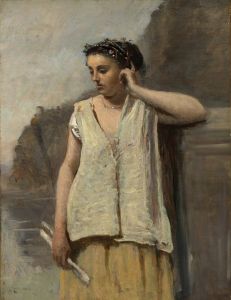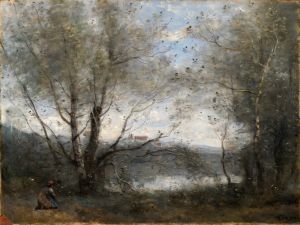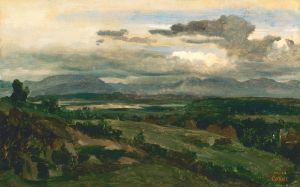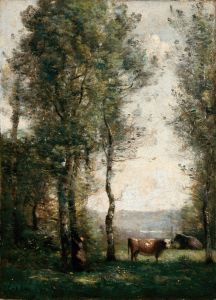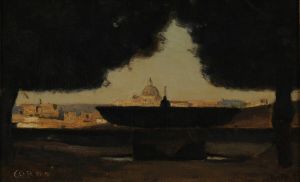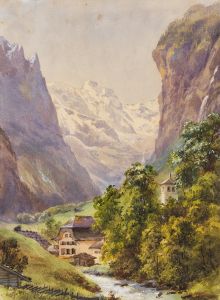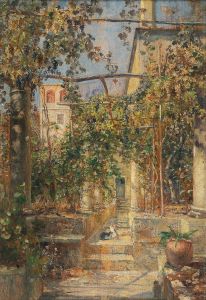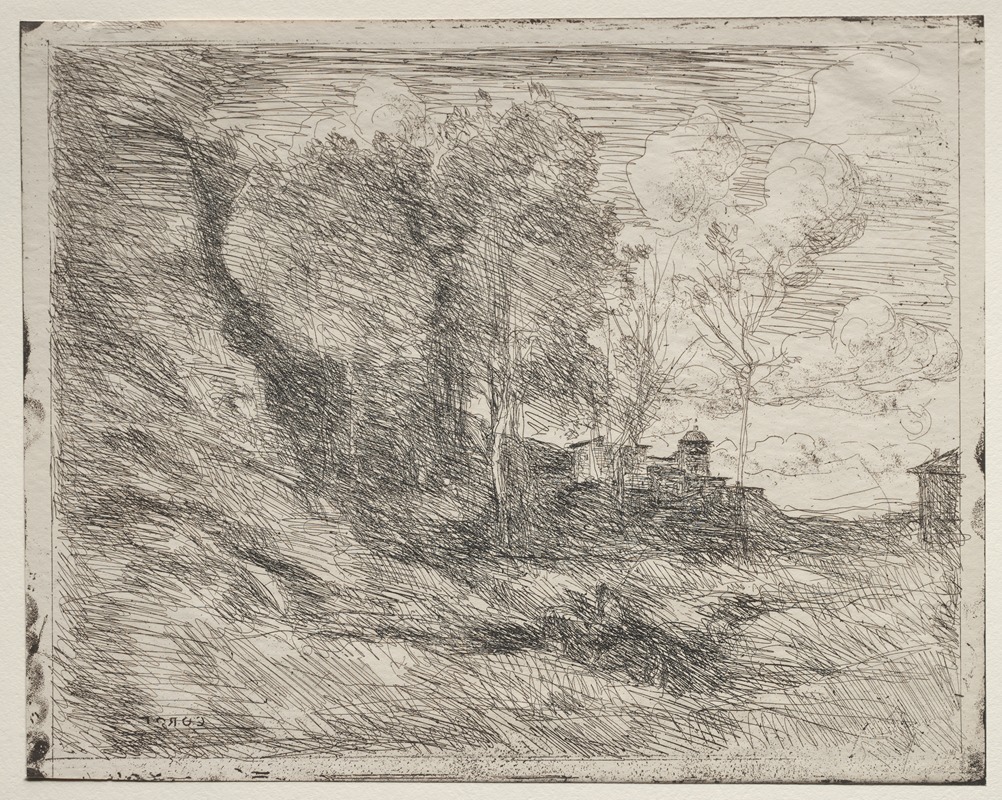
A Souvenir of Ostia
A hand-painted replica of Jean-Baptiste-Camille Corot’s masterpiece A Souvenir of Ostia, meticulously crafted by professional artists to capture the true essence of the original. Each piece is created with museum-quality canvas and rare mineral pigments, carefully painted by experienced artists with delicate brushstrokes and rich, layered colors to perfectly recreate the texture of the original artwork. Unlike machine-printed reproductions, this hand-painted version brings the painting to life, infused with the artist’s emotions and skill in every stroke. Whether for personal collection or home decoration, it instantly elevates the artistic atmosphere of any space.
Jean-Baptiste-Camille Corot was a prominent French landscape painter and a pivotal figure in the transition from traditional Neoclassical painting to the innovations of Impressionism. His work, "A Souvenir of Ostia," is one of the many paintings that exemplify his mastery in capturing the serene beauty of nature and his ability to infuse landscapes with a sense of poetic tranquility.
Corot was born in Paris in 1796 and began his artistic career relatively late, at the age of 26. He was known for his travels throughout Europe, particularly Italy, where he found much of his inspiration. The Italian countryside, with its unique light and atmosphere, had a profound impact on his work. "A Souvenir of Ostia" reflects this influence, as it is inspired by the ancient town of Ostia, located near the mouth of the Tiber River, close to Rome.
The painting is a testament to Corot's ability to blend realism with idealism. While it captures the essence of the landscape, it also conveys a dreamlike quality that is characteristic of Corot's work. This duality is achieved through his use of soft, diffused light and a muted color palette, which create a harmonious and contemplative mood. Corot's brushwork is delicate and precise, yet it allows for a certain fluidity that gives the painting a sense of movement and life.
"A Souvenir of Ostia" is not just a depiction of a specific place; it is an evocation of a memory, a common theme in Corot's oeuvre. The term "souvenir" in the title suggests a personal recollection or an emotional connection to the landscape, rather than a literal representation. This approach was innovative for its time and influenced many later artists who sought to capture the emotional resonance of a scene rather than just its physical attributes.
Corot's work was highly regarded during his lifetime, and he was a key figure in the Barbizon School, a group of painters who advocated for painting directly from nature. His influence extended to the Impressionists, who admired his ability to capture the fleeting effects of light and atmosphere. Although Corot's style is more restrained and less radical than that of the Impressionists, his emphasis on naturalism and his exploration of light and shadow paved the way for their experiments.
"A Souvenir of Ostia" is housed in several collections, as Corot often created multiple versions of his compositions. His works are celebrated for their timeless beauty and their ability to transport viewers to a serene and contemplative world. Corot's legacy is that of a bridge between the past and the future of art, and "A Souvenir of Ostia" is a quintessential example of his contribution to the evolution of landscape painting.
In summary, Jean-Baptiste-Camille Corot's "A Souvenir of Ostia" is a masterful blend of realism and idealism, capturing the essence of a landscape while evoking a sense of memory and emotion. Through his innovative approach to light and atmosphere, Corot left an indelible mark on the art world, influencing generations of artists and solidifying his place as a pivotal figure in the history of art.






